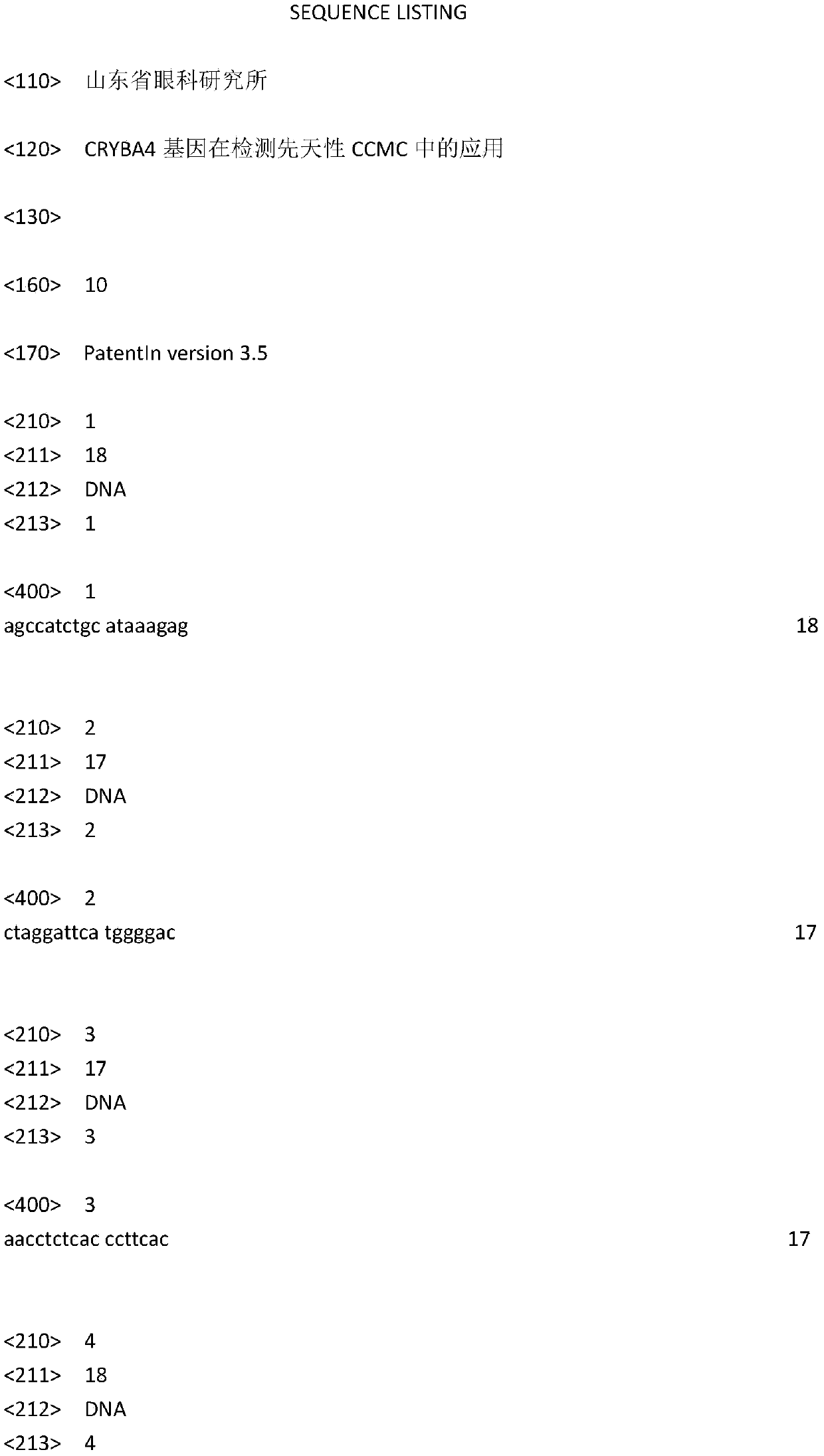Application of cryba4 gene in detection of congenital CCMC
A congenital cataract, gene technology, applied in the direction of DNA / RNA fragment, recombinant DNA technology, microorganism determination / inspection, etc., can solve the problem of limited understanding of pathogenic genes and so on
- Summary
- Abstract
- Description
- Claims
- Application Information
AI Technical Summary
Problems solved by technology
Method used
Image
Examples
Embodiment 1
[0017] Example 1: Screening the mutation site of CRYBA4 gene from congenital CCMC family
[0018] 1. Extraction of peripheral blood genomic DNA:
[0019] In compliance with the relevant national policies and regulations, and on the basis of the consent of the sampling subject, draw 2-5ml of peripheral venous blood from the first family member, put it into an EDTA anticoagulant tube, and store it at -80°C for later use; the frozen EDTA anticoagulant blood After melting at room temperature, put 500 μL into a centrifuge tube, add an equal volume of TE (pH 8.0), mix well, centrifuge at 10,000 rpm for 10 minutes at 4°C, and discard the supernatant.
[0020] Add 180 μL TE, 20 μL SDS (10%), 8 μL proteinase K (10 mg / ml), mix well, and place in a 37° C. water bath overnight. Remove the sample from the water bath and briefly centrifuge to pellet the sample. Add an equal volume of Tris-saturated phenol (about 300 μL) to the reaction tube, mix thoroughly, centrifuge at 10,000 rpm for 10...
PUM
 Login to View More
Login to View More Abstract
Description
Claims
Application Information
 Login to View More
Login to View More - R&D Engineer
- R&D Manager
- IP Professional
- Industry Leading Data Capabilities
- Powerful AI technology
- Patent DNA Extraction
Browse by: Latest US Patents, China's latest patents, Technical Efficacy Thesaurus, Application Domain, Technology Topic, Popular Technical Reports.
© 2024 PatSnap. All rights reserved.Legal|Privacy policy|Modern Slavery Act Transparency Statement|Sitemap|About US| Contact US: help@patsnap.com










